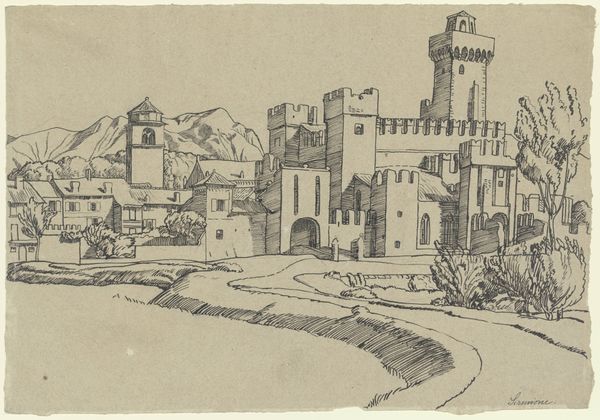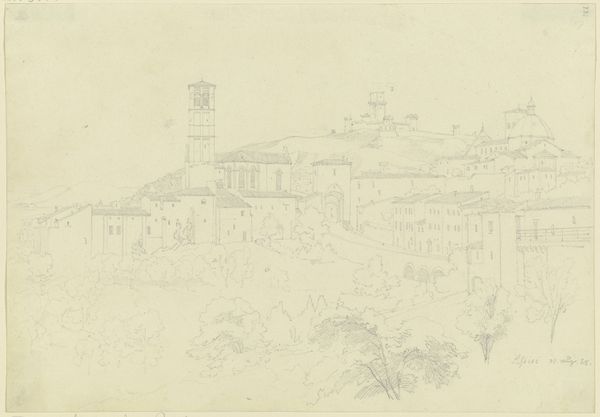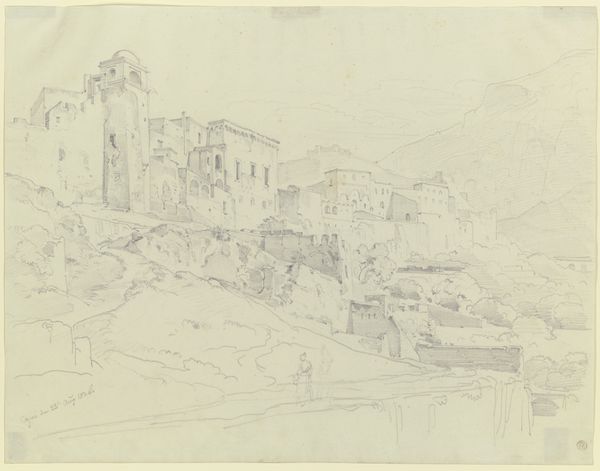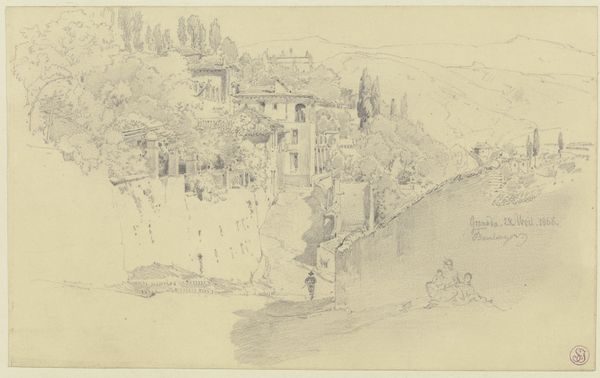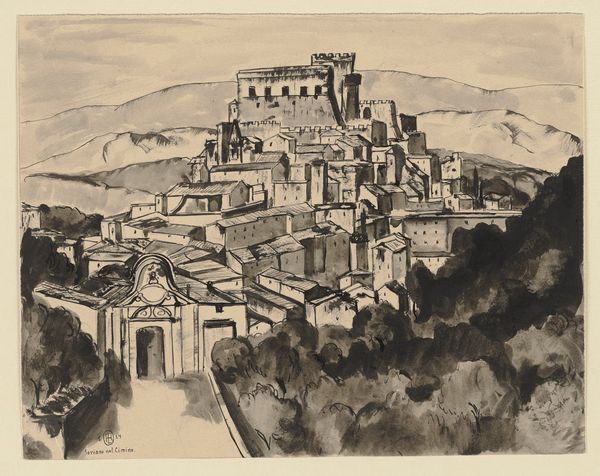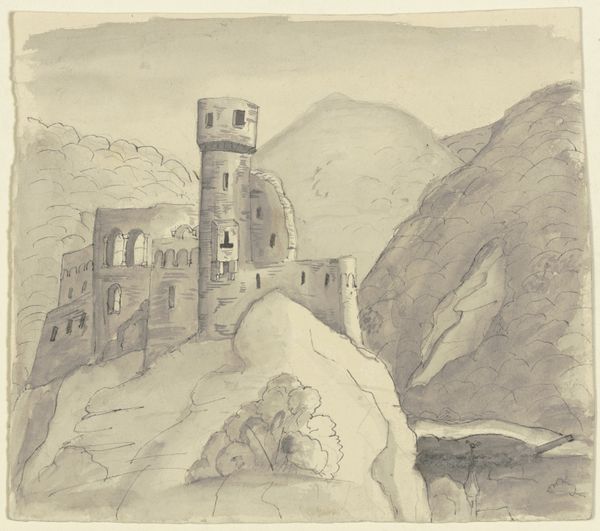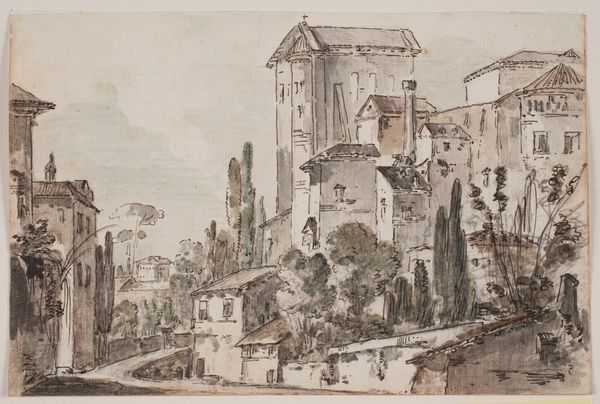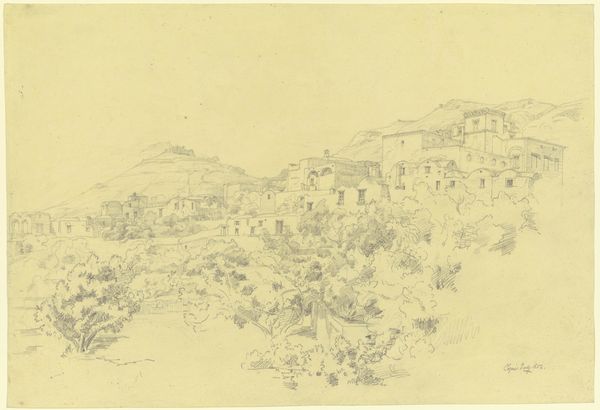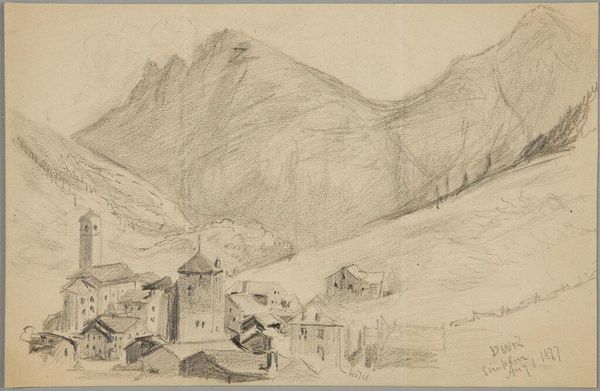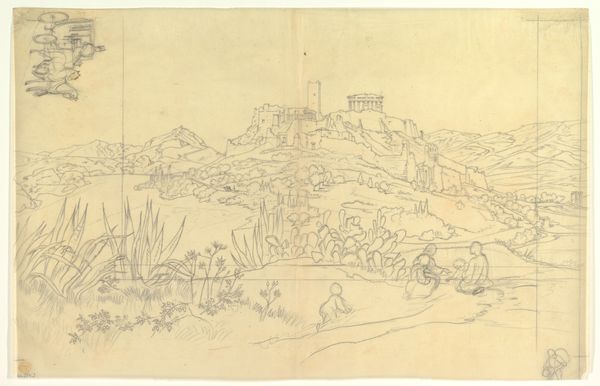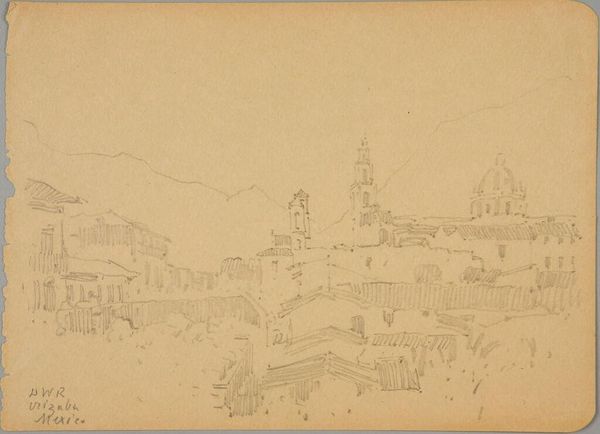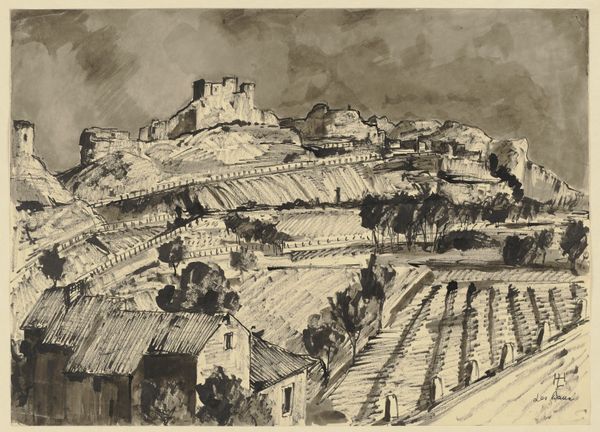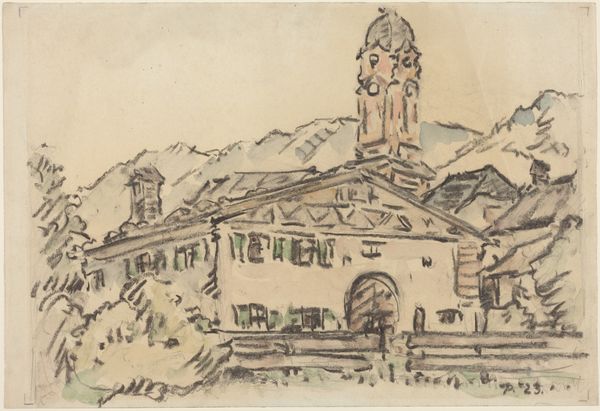
drawing, plein-air, paper, ink
#
drawing
#
plein-air
#
landscape
#
paper
#
ink
#
expressionism
#
cityscape
Copyright: Public Domain
Curator: Good morning, I'd like to guide our listeners through Hermann Lismann’s "Fontpédrouse en Pyrénées," a cityscape executed in ink on paper around 1928. It is a study, I think, of dynamic tensions between geometric architecture and the uncontainable forms of nature, particularly, how he deploys the use of line to navigate this contrast. Editor: The overall impression is stark, almost austere. There’s a weightiness to it, created perhaps by the density of the ink. I'm immediately drawn to the variations in texture - smooth walls set against the rugged stone of the buildings and wild growth surrounding the city, and that speaks volumes about its construction and the labor it would require. Curator: Precisely, there’s a deliberate articulation of contrasting volumes. Notice the solid forms of the buildings juxtaposed against the fragmented lines depicting the foliage and mountainous backdrop, it pushes and pulls at our sense of depth and the stability of this settlement. Editor: And I find myself considering the availability of materials. Stone, wood, ink—where did they source them? Did they make their own inks? We can examine what we value about this location and also about the production of drawing. And I also wonder about the weather—I have a hard time drawing outside with my paper and paints and this really is in the plein-air style. Curator: That's a valuable consideration. Looking beyond pure aesthetics and contemplating the artist's practical concerns in working en plein air gives a tangible depth to this drawing. The immediacy, as you point out, of the setting is certainly brought to bear in how the mountain structures become flattened by the artist’s need to reduce them to essential outlines. Editor: Right, that act of reduction – the distillation of this whole place into these humble lines—the value and source of each building material can bring insight to the value we attribute to both location and method, revealing how an expressionist aesthetic has to do with both the internal emotional world and external material world. Curator: Indeed, so the act of engaging with a work like “Fontpédrouse en Pyrénées” reveals a fascinating dialectic between the tangible realities of the world represented, and its transposition into this abstract visual field. Editor: Which compels me to consider not just the what but also the how—what went into making it, not just conceptually but materially. It brings new depth. Curator: Absolutely. It seems the simple lines reveal there’s always a layered reality.
Comments
No comments
Be the first to comment and join the conversation on the ultimate creative platform.
